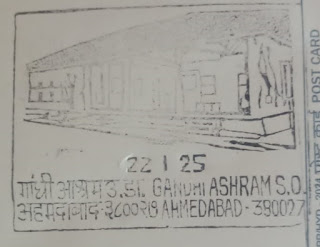Great Indian Bustard Sanctuary established in 1979, also known as the Jawaharlal Nehru Bustard Sanctuary of Maharashtra is a wildlife sanctuary for the great Indian bustard at Solapur. The land is drought-prone and semi-arid. It is in the Deccan thorn scrub forests ecoregion.The great Indian bustard or Indian bustard is a bustard occurring on the Indian subcontinent. It is a large bird with a horizontal body and long bare legs, and is among the heaviest of the flying birds. Once common on the dry grasslands and shrubland in India, as few as 150 individuals were estimated to survive as of 2018, reduced from an estimated 250 individuals in 2011. It is critically endangered due to hunting and habitat loss. It is protected under the Indian Wild Life (Protection) Act, 1972.
The Udanti Wildlife Sanctuary in Chhattisgarh is home to wild
buffaloes and other wildlife. It's located near Gariaband Taluka in Raipur
District. The sanctuary covers an area of 237.27 km2 and was declared as a
protected area in 1983.
Achanakmar Wildlife Sanctuary is a sanctuary in Mungeli district of Chhattisgarh and in the Anuppur and Dindori districts of Madhya Pradesh in India. It was established in 1975, under the provisions of the Indian Wildlife Protection Act of 1972, and declared as a Tiger Reserve under Project Tiger, in 2009.It is a part of the Achanakmar-Amarkantak Biosphere Reserve.view of Achanakmar.The sanctuary is close to Amarkantak, the source of the Son River and Narmada River.
Semarsot Wildlife Sanctuary is a protected area and wildlife
sanctuary located in Surguja district of the Indian state of ChhattisgarhThe
protected area consists of a mixture of moist and dry tropical deciduous
forests. Major fauna include nilgai, spotted deer, sambar deer, chinkara,
leopard, sloth bear, wild boar, and Indian fox.
The Asiatic cheetah became extinct in India in the mid-20th century. The cheetah was once found in a wide range of India, from Punjab to Tamil Nadu, and from Gujarat to Bengal.The Asiatic cheetah is smaller than the African cheetah, but has a thicker coat, a more powerful neck, and slender legs.The Asiatic cheetah can reach sprinting speeds of up to 128 kilometers per hour.
Marine
Fossils Park would be built at Manendragarh in Korea district. The proposed
park is situated at the confluence of Hasdeo and Hasiya river in Amakherwa area
about 1 km. will be developed in the area. It is noteworthy that information
about having marine fossils in Amakherwa was received in the year 2012.One
kilometer between Hasdeo river in Amakherwa area. The area is full of fossils
of marine fauna and flora. Fossils of sea creatures like bivalve molluscs,
eurydesma and aviculopecten are present here. Apart from these, there are also
species of pelecypods, gastropods, brachiopods, bryozoans and crinoids.
The common hill myna (Gracula religiosa), sometimes spelled
"mynah" and formerly simply known as the hill myna or myna
bird, is the myna most commonly sighted in aviculture, where it
is often simply referred to by the latter two names. The common hill myna is a
popular talking bird. Its specific name religiosa may allude to the practice
of teaching mynas to repeat prayers. Kanger Valley National Park is renowned
for its stunning landscapes, breathtaking waterfalls, and notable limestone
caves with unique underground geomorphology. It serves as a significant habitat
for the Bastar Hill Myna, the state bird of Chhattisgarh. This national park is
particularly famous for the Bastar Hill Myna (Gracula religiosa peninsularis),
a subspecies of the common hill myna.
The Maria tribe has a strong oral tradition that includes folklore,
music, and dance. They are renowned for their prowess in hunting and
agriculture. The tribe practises a matriarchal type of social organisation and
has a particular traditional attire and architectural style. According to the
Indian constitution, the Maria tribe is a Scheduled Tribe, giving them specific
advantages and rights. The Maria tribe wears jewellery, such as earrings,
necklaces, bracelets, and anklets, on both the male and female sides. Shells,
beads, and silver are some of the locally sourced elements used to make the
jewellery.
Giant Metrewave Radio Telescope (GMRT), located
near Narayangaon, Pune in India, is an array of thirty
fully steerable parabolic radio telescopes of 45 metre diameter,
observing at metre wavelengths. It is the largest and most
sensitive radio telescope array in the world at low frequencies.It is operated
by the National Centre for Radio Astrophysics, a part of the Tata Institute of Fundamental Research, Mumbai. It was conceived and built under
the direction of Govind Swarup during 1984 to 1996.It is
an interferometric array with baselines of up
to 25 kilometres. It was recently upgraded with new receivers, after which
it is also known as the upgraded Giant Metrewave Radio
Telescope (uGMRT).
Salim Ali Bird Sanctuary is an estuarine mangrove habitat, which is declared as the bird sanctuary, and located on western tip of the Island of Chorão along the Mandovi River, Goa, in India. The sanctuary is named after Salim Ali, the eminent Indian ornithologist.The sanctuary and island are accessed by a ferry service running between Ribander and Chorao. The sanctuary has a paved walk that runs between mangroves of Rhizophora mucronata, Avicennia officinalis and other species.
Pandavleni, also known as Tirthankar Leni, Panch Pandav or Pandav Leni Jain cave, is ancient rock-cut sculptures complex located at Gomai River around 6 kilometer north of Shahada, Maharashtra. These caves were excavated by Jain saints 2,000 years ago. Pandavleni complex is in the
bed of Gomai river carved in one solid rock. The Pandavleni is around 10 metres
below the rest of terrain. There are rather identical two structures around 15
metres apart in east-west line. Sculptures in rock are carved in such a way
that water in river flows over the rock, water falls in sculpture complex but
force of water do not impact sculptures. It is like sculpture carved on the
wall of well.
Shillong Club is one of the oldest, longest and best
National Golf circuit across the World, it is the third oldest Golf course in
India and the first 18 holes course in Asia.Owing to its scenic beauty, LIS
Golf Association & Museum has given it the title of “Gleneagles
of the East” as
a 9 hole Golf course in1898, its conversion into a18 hole course in 1924 was
the initiative of Captain Jackson and C.K.Rhodes. The Shillong Golf Course is
the third oldest Golf Course in India.
Matheran Hill Railway (MHR) is a 2 ft narrow-gauge heritage
railway in Maharashtra, India, which is administered by the Central Railway
zone. It covers a distance of 21 km, cutting a swathe through forest and
connecting Neral to Matheran in the Western Ghats. The MHR is on the tentative
list of UNESCO World Heritage Sites.The Neral–Matheran Light Railway was built
between 1901 and 1907 by Abdul Hussein Adamjee Peerbhoy and financed by his
father, Sir Adamjee Peerbhoy, at a cost of Rupees 16,00,000.Adamjee Peerbhoy
visited Matheran often, and wanted to build a railway to make it easier to get
there.
Mattu gulla is green in colour, unlike
the purple brinjals grown in other places. As the word "gulla"
indicates, it is spherical in shape.It is a seasonal vegetable which is grown
after the monsoon season from the months of September and October.It has low
moisture content and is known for its unique taste.Mattu gulla is a widely used
vegetable in Udupi cuisine especially the sambar.Mattu gulla obtained the
Geographical Indication tag in 2011 for its unusual and unique taste and
exclusive location of production.
Udupi
Mallige also known as Shankarapura Mallige is very unique in its fragrance,
speciality in quality and popular in the region, for these reasons Udupi
Mallige.Udipi Mallige is a unique crop that is grown in shankarapura which is a
village in udupi taluk.It is much sought after in Hindu temples and during the
wedding seasson. The Flower has a subtle fragrance that is unmissable and its
strung when the flowers are picked in the bud stage.They are strung using
thread and even using the fibre of the banana plant.
The
Unkal Lake in Hubballi stands as the largest water body within an urban area in
north Karnataka. Constructed in 1893 by the esteemed engineer, Sir M.
Visvesvaraya, its primary purpose was to provide drinking water to the
residents. Unkal lake, a huge water body in the middle of a peaceful city.
Santha
Shishunala Sharifa was an Indian social reformer, philosopher and poet.Govinda
Bhatta, a Brahmin, was famous in the region as an unconventional Master. He
cared little for caste or religion, and spent more time with anyone who invited
him, and ate anywhere he felt like eating.
Narayanappa
known by his pen name Kumara Vyasa, was an influential and classical poet of
early 15th century in the Kannada language. His pen name is a tribute to his
magnum opus, a rendering of the Mahabharata in Kannada.Kumara Vyasa literally
means "Little Vyasa" or "Son of Vyasa" Vyasa is the title
of Krishna Dwaipayana, the author of Mahabharata.
The
Bellary Fort was built on top of a hill called the "Ballari Gudda" or
the Fort Hill. It is situated in the historic city of Bellary, in the Bellary
district, in Karnataka state, India. It was built in two parts namely, the
Upper Fort and the Lower Fort. The Upper Fort was built by Hanumappa Nayaka, a
feudatory of Vijayanagara Empire, but the Lower Fort was built by Hyder Ali in
later part of the 18th century
Parvati
Kumarswami Temple is notable for two ancient Hindu temples which are in the
same compound, and are both protected monuments. The more famous in religious
terms is the Kumaraswami Temple (8th-10th century), believed to be the first
abode in south India of Murugan or Karthikeya, the Hindu god of war, son of
Parvati and Shiva, and brother of Ganesha. To art historians the Parvati Temple
beside it (7th-8th century) is the more unusual in terms of Hindu temple
architecture.
Gavisiddeshwara
Matha of Koppal is a one of the oldest monasteries in North Karnataka. Gavimath
is at least 800 years old and one of the well known Lingayath Mathas. Gavimath
is involved in uplifting the the society
by various activities like running educational institutions, providing
food to the needy and imparting spiritual knowledge.
Bichale
is a place where the Madhwa Saint Sri Raghavendra Swamy got in touch with his devotee
Sri Appannacharya. Appannacharya was a great scholar who taught Vedas and Upanishads.
It is believed that though Appannacharya was a wealthy man he encouraged his
students to beg for alms to make them understand the life of sages as described
in the Vedas. The rice brought by the disciples was tied in a cloth and hung on
the branch of the gum tree nearby and the rice got automatically cooked by the
time Appannacharya completed his lecture.
The
Bara Gazi Toph, meaning “Great Victorious Cannon,” traces its roots back to the
14th century, forged during the reign of the Bahmani Sultanate.
Sultan Alauddin Hasan Bahman Shah, th empire’s founder, envisioned this
magnificent weapon as a symbol of his dominion and a formidable deterrent
against enemies. Crafted from an alloy of five metals, the cannon boasts a
staggering length of 29 feet and weighs an estimated 70-80 tonnes. Its impressive
girth of 2 feet in diameter and 7-inch thick walls speak volumes of the engineering
prowess of its time.
Bonal
Bird Sanctuary sometimes spelled Bohnal Bird Sanctuary is bird sanctuary and wetland
near Bonal village in the Shorapur taluk of Yadgir district in Karnataka state,India.The
sanctuary has its origins in thetank of bonal, a water conservation tank built
by the 17th century ruler of Shorapur, Pam Naik, later during the British Raj,
Meadows Taylor,the British administrator at Shorapur, extended it to 1,600
acres with 12 feet average depth.















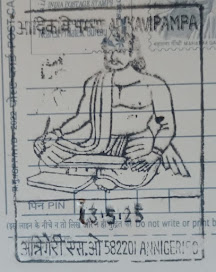


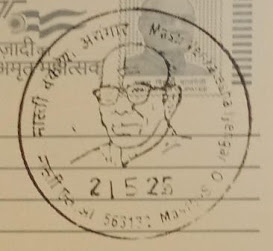
.jpeg)

.jpeg)

.jpeg)
.jpeg)

.jpeg)
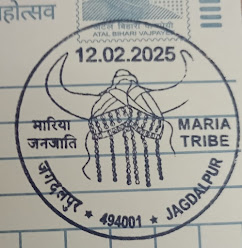




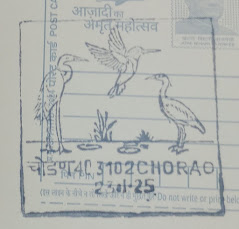
.jpeg)

























.jpeg)




.jpeg)

.jpeg)
.jpeg)
.jpeg)
.jpeg)

.jpeg)



.jpeg)


.jpeg)











.jpg)

.jpeg)
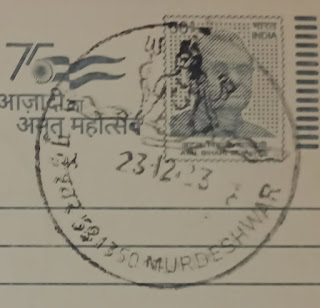
.jpeg)




.jpeg)

.jpeg)



.jpeg)
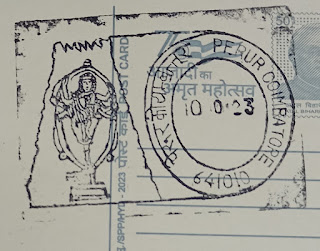




.jpeg)
.jpeg)

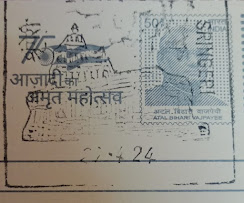
.jpeg)




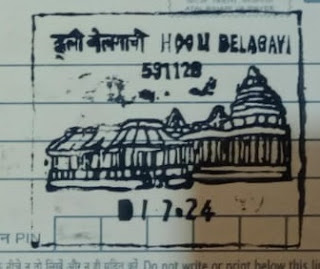
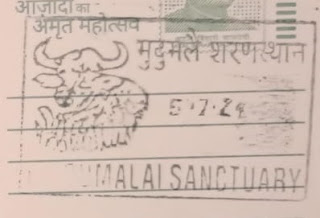




.jpeg)




